- News
- Reviews
- Bikes
- Components
- Bar tape & grips
- Bottom brackets
- Brake & gear cables
- Brake & STI levers
- Brake pads & spares
- Brakes
- Cassettes & freewheels
- Chains
- Chainsets & chainrings
- Derailleurs - front
- Derailleurs - rear
- Forks
- Gear levers & shifters
- Groupsets
- Handlebars & extensions
- Headsets
- Hubs
- Inner tubes
- Pedals
- Quick releases & skewers
- Saddles
- Seatposts
- Stems
- Wheels
- Tyres
- Tubeless valves
- Accessories
- Accessories - misc
- Computer mounts
- Bags
- Bar ends
- Bike bags & cases
- Bottle cages
- Bottles
- Cameras
- Car racks
- Child seats
- Computers
- Glasses
- GPS units
- Helmets
- Lights - front
- Lights - rear
- Lights - sets
- Locks
- Mirrors
- Mudguards
- Racks
- Pumps & CO2 inflators
- Puncture kits
- Reflectives
- Smart watches
- Stands and racks
- Trailers
- Clothing
- Health, fitness and nutrition
- Tools and workshop
- Miscellaneous
- Buyers Guides
- Features
- Forum
- Recommends
- Podcast
feature
 Get to know 7 downsides of electronic shifting April 2021
Get to know 7 downsides of electronic shifting April 2021Get to know 7 downsides of electronic shifting; the annoying things they never tell you about
We're big fans of electronic shifting here at road.cc and we don't know of many people who've used it regularly wanting to switch back to mechanical shifting, but it's not without its downsides. Here are some of the little annoyances that we've experienced and heard about over the past few years.
Don't forget to budget for extras
If you're buying a complete bike you'll obviously get all the electronic parts you need, but if you're buying electronic groupset separately make sure that you budget for everything that you need on top of the obvious components.
As well as the shifters and derailleurs, with SRAM eTap you'll need only a Charger Power Pack that retails for £30-£40.
There's more to buy if you go for Shimano Di2 or Campagnolo EPS. On top of the shifters, derailleurs and charger, you'll need a battery and wiring.
Read our Shimano Dura-Ace R9150 Di2 review
In the case of Shimano, you'll need a Junction A box or E-tube Di2 handlebar mount Junction A charging point and a bottom bracket junction for internal wire routing. You'll also need an E-Tube wireless unit if you want to customise the function of your Di2 system. With Campagnolo, you'll need a DTI EPS V4 Interface.
Satellite shifting from SRAM or Shimano is going to cost you extra too.
If you buy a groupset as a package, check that it includes everything you need.
The cost of replacement parts is high
It's no great revelation that electronic shift systems are more expensive than mechanical equivalents but don't forget that as well as the initial outlay you need to consider the cost of replacement parts.
Say you come off and wreck a Shimano Ultegra Di2 rear derailleur, for example: a new one is going to cost you £255 at full retail price, compared with £87 for a cable-operated model — nearly three times as much — and you can't save money by downgrading to Shimano 105 like you could with mechanical because there's no Di2 version available. Well, not yet anyway.
A SRAM Red AXS eTap front derailleur is £370 whereas a mechanical Red Yaw braze-on front derailleur is £102.
Check out 10 SRAM Red eTap road bikes
Granted, Ultegra Di2 shifters are slightly cheaper than the mechanical ones (£289.98 versus £319.99), but that's unusual.
You might run out of battery charge
Running out of battery power is a possibility if you have electronic shifting. Like falling off at the traffic lights the first time you use clipless pedals, it's the sort of thing you'll do once and then make sure you never repeat.
A Shimano Di2 system runs on a single battery and each charge lasts several hundred miles (the exact distance depends on how often you shift and the temperature). You can check the charge status via the Junction A (which is either a box or a bar-end option).
Campagnolo EPS has a similar colour-coded system and the indicator lamp will light up red every five minutes when the battery charge falls below 6%.
Each of the derailleurs of a SRAM eTap system has its own rechargeable battery that lasts for over 1,000km (625 miles) of typical riding. A green indicator light on each component turns on after each shift. Once the battery charge is below 25%, that light turns red and below 15% the light starts to flash red.
The CR2032 batteries in the shifters will need changing on average about once every two years, and there's a similar LED system to tell you how much juice is remaining.
Constant pressure on the button can eventually drain the battery of an electronic shift system. We've heard of this happening during air travel, the rider finding that the battery they'd topped up before leaving home was completely empty by the time they came to build the bike up before the start of their training camp. You can avoid this by unplugging the wires or removing the battery/batteries.
That goes double for eTap because the rear derailleur is the brain of the system and wakes up when it detects movement. A long car or plane journey can involve a lot of wake/sleep cycles and take care of a significant part of the rear battery's charge, so take it off for transport.
Technical issues can be difficult to diagnose/repair
If you have a shifting problem with a mechanical system, the issue is usually pretty obvious. You can tell instantly if the cable has snapped, if it's too loose, or whatever, and put it right.
It can be more difficult with an electronic system. road.cc technical editor Dave Arthur had a Di2 battery fail while out on the road, for example (it stopped working entirely; it hadn't just run out of charge). It took a while to get to the root of the issue and he was left with an unrideable bike until he'd sourced a new battery. That could be a big problem if you're in the back of beyond.
Read Head to head: Shimano Dura-Ace R9150 Di2 v SRAM Red eTap
We would say, though, that in our experience problems like this are rare and Shimano does have very good diagnostics tools.
Shimano Di2 shifts can be tricky in winter gloves
Some people find it difficult to distinguish between the upshift and downshift buttons of a Shimano Di2 road system while wearing thick winter gloves. This is something that we hear quite a lot although other users report no issues whatsoever.
With Di2, the upshift and the downshift buttons sit just behind the brake lever, one beside the other. It's possible to hit the wrong one in big gloves, or to hit both together.
That said, Di2 is customisable. You could reconfigure the system and make the button that's hidden at the top of each hood perform upshifts, for example, to sidestep any problem.
On the flip side, when we discussed this in the road.cc office, one member of the team said he finds it simpler to operate a Di2 shifter than a mechanical shifter with frozen hands. A tap on the button is slightly easier than sweeping a lever when your fingers are dead.
Due to the different ways in which shifts are performed, this isn't an issue with either Campagnolo EPS or SRAM eTap.
It's easy to become complacent
Chances are that you won't need to adjust an electronic shift system often so it's easy to fall into the trap of thinking that you never need to touch it at all.
With a mechanical system you'll almost certainly need to adjust the gear cable tension after the first few rides, and probably occasionally after that, but that's not an issue with electronic shifting.
You still need to keep an eye on the various components of an electronic system, check the indexing and make any adjustments necessary, especially if your bike takes a knock or you break it down and reassemble it for travel.
Sooner or later you'll lose a charger
Both the SRAM eTap charger (above) and Shimano's USB Di2 Internal Battery Charger are quite titchy and easy to mislay, especially if you throw in the chaos of, say, a house move. Road.cc editor-at-large John Stevenson recently conceded defeat and bought a new eTap charger even though he's certain his old one is in a box somewhere. He says next time he moves house he's gaffa-taping it to his bike and is taking bets on how quickly the old one will now turn up.
Mat has been in cycling media since 1996, on titles including BikeRadar, Total Bike, Total Mountain Bike, What Mountain Bike and Mountain Biking UK, and he has been editor of 220 Triathlon and Cycling Plus. Mat has been road.cc technical editor for over a decade, testing bikes, fettling the latest kit, and trying out the most up-to-the-minute clothing. He has won his category in Ironman UK 70.3 and finished on the podium in both marathons he has run. Mat is a Cambridge graduate who did a post-grad in magazine journalism, and he is a winner of the Cycling Media Award for Specialist Online Writer. Now over 50, he's riding road and gravel bikes most days for fun and fitness rather than training for competitions.
Latest Comments
- muhasib 1 hour 2 min ago
"Clunie, who was stopped at the lights at the time of the crash,"...
- BBB 1 hour 48 min ago
More anti-cycling bigotry from The Telegraph....
- mikeclarke 3 hours 38 min ago
Sheffield has an appalling road safety record, in particular child deaths caused by cars is above average. A campaign to increase the number of...
- Miller 4 hours 43 min ago
I'm reading this as the komoot founder cashing out? Tough on the staff who'll get a redundancy notice and not a payout.
- Rendel Harris 5 hours 9 min ago
You can pick them up for £129 at Cyclestore now with free postage.
- David9694 7 hours 40 min ago
I certainly don't put every story about every fatal crash I encounter, this pair just got me curious, like why are 90 year olds still driving and...
- Vo2Maxi 8 hours 13 min ago
Over 25 years ago now, I was on the Ideal Travel winter training camp in Majorca....
- chaos 8 hours 22 min ago
Great news for titanium and steel owners like me. My metal rim bikes roll on. Sadly, my venture into carbon territory is a different story. Anyway,...
- Sredlums 9 hours 5 min ago
I honestly can not yet get my head around how this thing is supposed to work. What I do know is that it does not have the chain on each side,...
- Bmblbzzz 9 hours 45 min ago
And it's worth remembering it's not just Park St – it's from Vic Rooms down to College Green. https://www.bristol247.com/news-and-features/news...
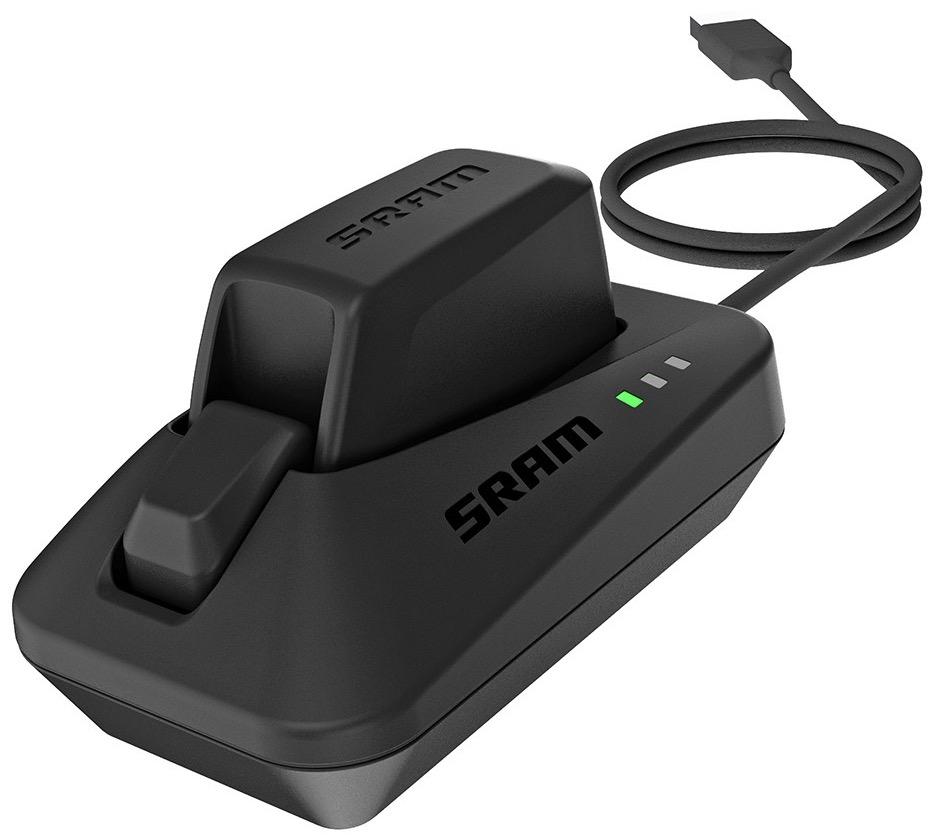
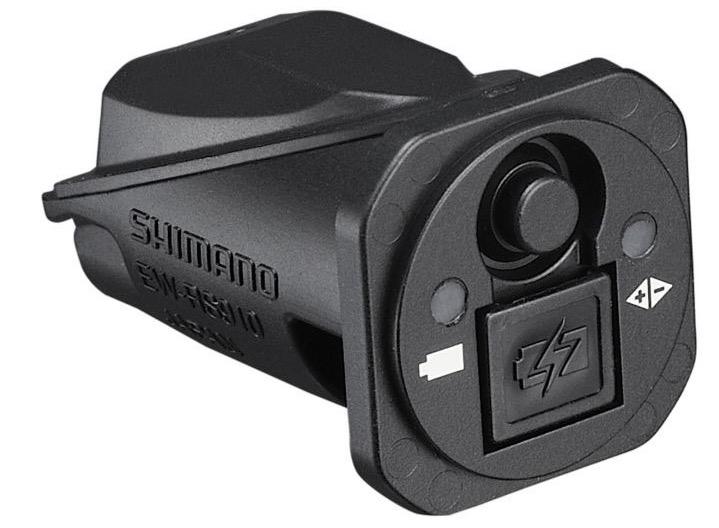
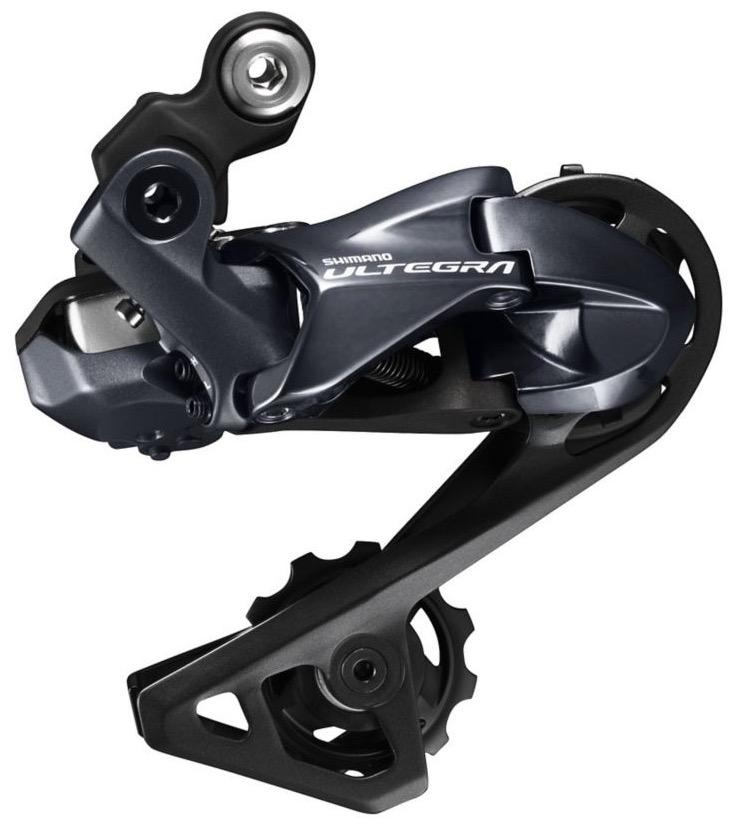
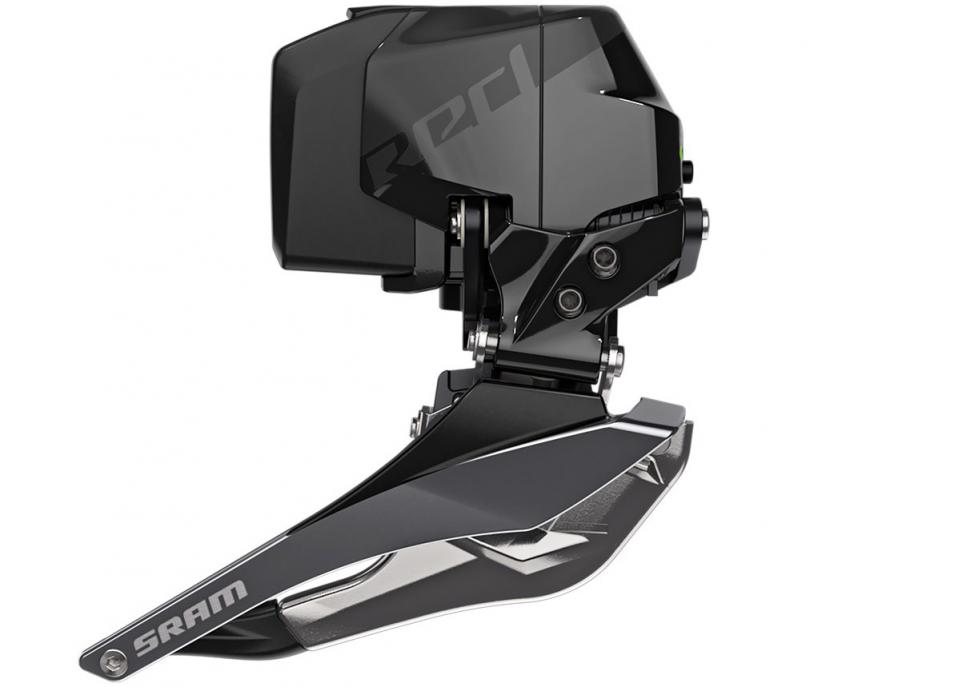
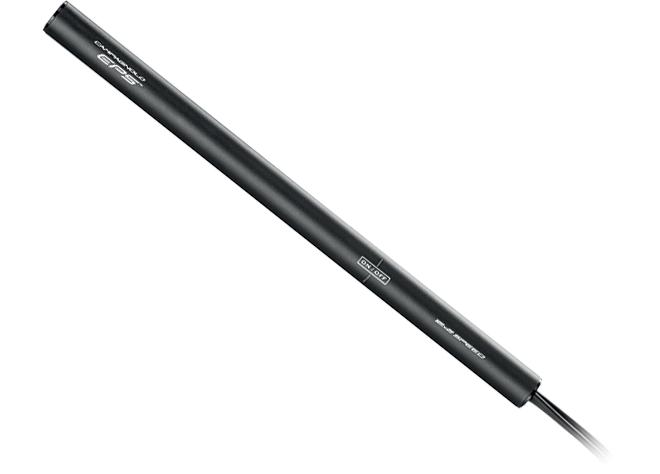
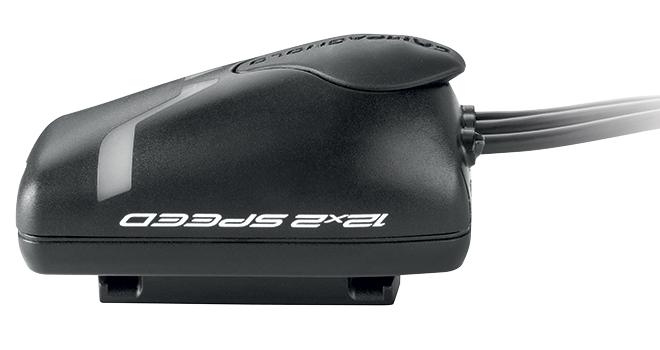
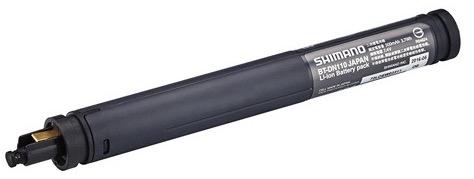

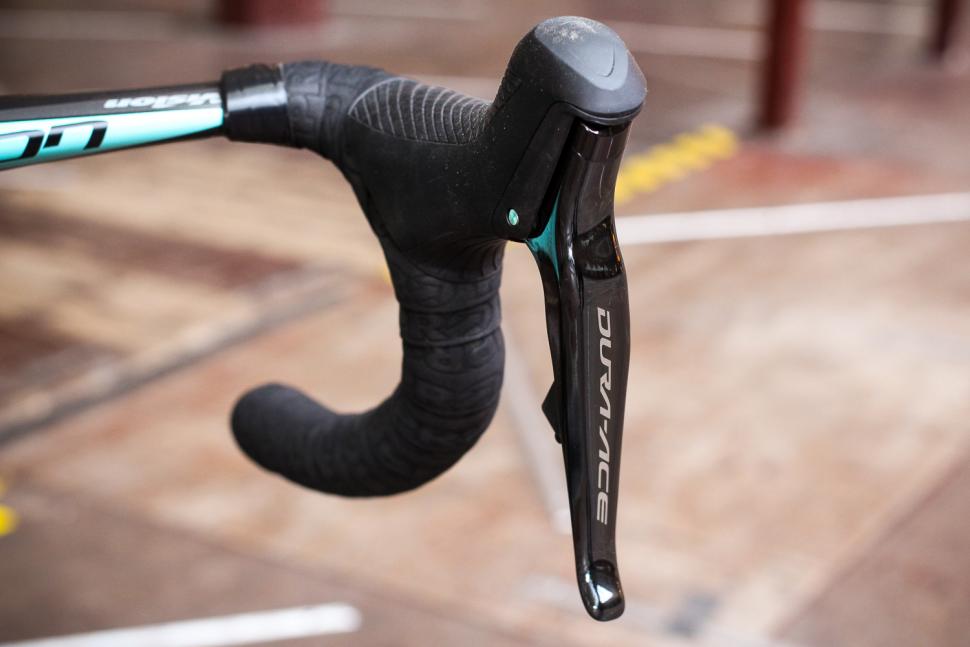
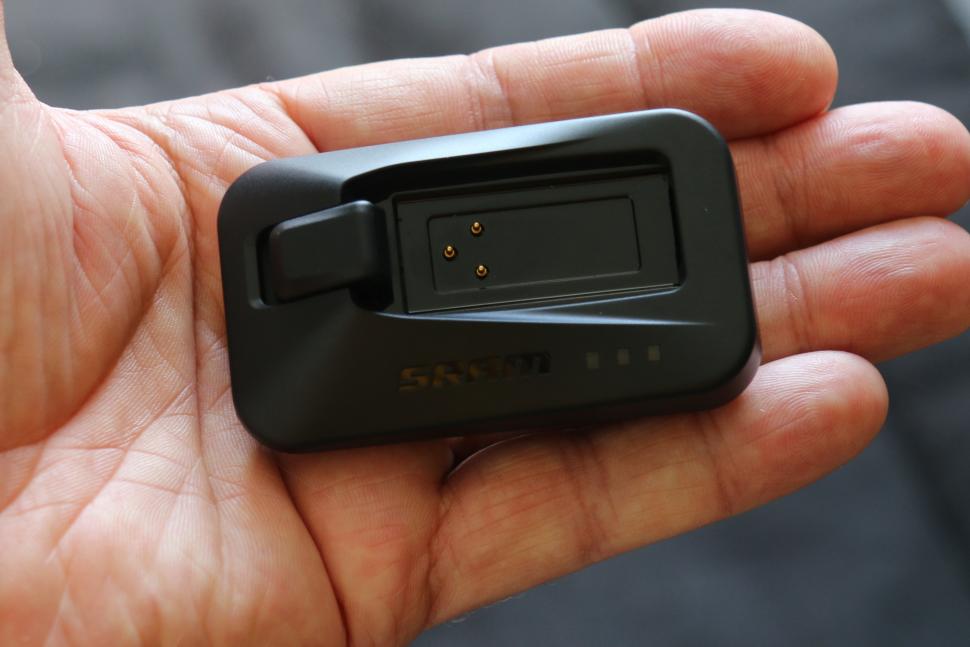
Add new comment
54 comments
Further to my earlier comment, I've solved the Shimano 'buttons too close' issue - which coming from Campag I found an absolute pest - by fitting sprinter shifters in the Campag thumb button position and programming it all to work like Campag, i.e. right thumb = upshift rear and left thumb = downshift front. I've programmed both buttons on each lever to do the same function following the Campag pattern, thus right = upshift front, left = downshift rear. Now it all works perfectly and I'm never missing a shift again or shifting down rather than up at the wrong moment.
Dagnammit - another Di2 battery bites the dust.
It was starting to hold less charge so I was checking the charge the night before wanting to ride and was charging it back up on a weekly basis. Yesterday morning, I rode into work and it was on 4 bars and working fine, parked it up and worked for the day. Started my ride home and it's completely dead (checked the cable, unplugged it and plugged it back in again) so I ended up getting the train home rather than do 20-odd miles on a fixie.
I'd bought a new battery when I saw it first starting to play up, so I plugged that in this morning and everything has come straight back to life. (The battery doesn't even need a firmware update so must be a new model).
Dagnammit - another Di2 battery bites the dust
Some of these Li-ion batteries do seem to go amazingly suddenly. My Fitbit battery was still doing well, lasting about 6 days, and was fully charged when I set off for a few days in the Lakes. It was still OK when I got there, but sometime during the following day it died completely- nothing on the screen and no response. On charging at home it came to life only while connected, and went suddenly from 1% to 100% with no intervening stage.As soon as it was disconnected it returned to no response before it even managed a pulse reading, and as again back at 1%. It still remembered the correct time throughout! It won't be worth getting a new battery, even if it's possible.
I tried charging the dead battery in case it had just run itself flat for some reason, but no response at all. Only about 2 years old as well.
I'm intrigued by the mix of Campag/Sram/Shimano components mentioned below by Belisarius. Has anyone else tried this? Everything I've read says don't mix - and that the pick up angles are different which could cause excessive wear....
Basically most 11sp cassettes, chains and cranks are interchangeable, to all intents and purposes. You will need matching derailleurs and shifters, and - if running disc - matching calipers [unless you go for a specific aftermarket one, like Hope]. The old SRAM red 11sp cassette on an otherwise Shimano system was a classic weight weenie move. You're seeing that come back as you can still actually get SRAM cassettes, whereas Shimano are getting scarce. Campag chains have been notoriously durable since the Ark, tbh, so what the chap said below doesn't surprise me. Whether or not it actually saves you money is more debatable, as if the cassette wears first, you'll have to change the chain anyway.
12sp and/or 1x specific is where it gets complicated. There is some Campag/SRAM cross-compatibility - there are guys running SRAM AXS shifters and derailleurs but Campag cranksets and cassettes - but it's not perfect, I believe because neither chain plays perfectly with the other's system.
There's obviously the added potential complications of different freehubs and bottom brackets, so if you do go down this route, work everything out on paper first, very carefully.
At the moment, also check availability of everything before buying anything and if possible buy it all in one go. I've just had a build almost holed below the waterline because I could get everything but the relevant freehub adapter.
Recent adopter of GRX Di2 on a self build - Dec '20. If I had known what a pain in the ass it was going to be I probably would have skipped it, or would have gone for Rival AXS if 4 months later. (Force AXS was just a few hundred quid too much, Rival not launched).
My 2 cents:
Pro's
Neutral
Surprised how noisey the front mech is - even when just auto-trimming.
Loss of the diagonal movement of the levers for combo braking and shifting on the RHS takes some getting used to.
Con's/TBD's
So I throw in my two cents. When I custom built Cervelo S3 (2019) I decided to go with SRAM eTap Red. I was already a huge fan of SRAM so I had no issues. I had the derailleurs and shifters on with 10mins and setup in another 10. I haven't touched it since, 2 years later even with ROTOR QRings. It shifts like a charm. Battery life has never once been an issue. LIke any battery device, you know to keep it charged. My Wahoo Bolt Elemnt lets me know when I need to charge in any case. Plus I just take them off and charge where ever I want to. I ride with a fully charged spare so even if I do get into trouble thats sorted. Finally there is certainly a lot less to go wrong with no wires, batteries and junction boxes etc with eTAP.
If you run a Di2 battery flat you have no one to blame but yourself. I think you could easily stretch the "several hundred miles" to well over a thousand, even in hilly areas of the country.
Buttons are always consistent no matter how cold your hands are, and the brake lever doesn't flap around.
Non flappy brakes and consistent levers have been a mainstay of mechanical Campagnolo for years. Don't have to worry about charging it either, win win
Have to say that when my Di2 went flat the other day condemning me to a fixie ride I did contemplate eBaying it for 11 speed Chorus. I have 10 speed Record on two older bikes and the only thing that runs flat is me!
Each time I came close to going electronic, I balk at the potential complications, and had I not devised a perfect mechanical groupset, I would have switched a long time ago. The saga started with the 9000, and its breaking plastic casettes (no, they are not carbon), fraying Shimano polymer cables, putrid wobbling DA chains etc. It as if we were egged to switch electronic as if the mechanical had reached limits. After thousands of kms or trial and error, the solution became evident. Went for Gore cables (now defunct- and got Yokozuna), SRAM XG-1190, and after multiple 'editorial' criticisms, Shimano eventually redesigned to the 9100RD. Chain was still is a problem- at 5.8mm Shimano was just bad, touching all sides of the cassette etc. Then the store Guru, 40 years in the business, got me on Campy. we went from 400km reliable DA chain to 4000kms of nirvana metallurgy, tak tak solid, no wobbling, etc. gained 2-3 km/hr just by troubleshooting these issue. Across all bikes, recreated the 9100/Yokozuna Cables, SRAM 1190 Monoblock with a campy Record 11 chain. Rest all Shimano.
That brought the system to a degree of precision and speed (150-200ms per gear changes, and I did not have the eqpt to measure faster changes); or5-6 per second. QUIET. So quiet, in fact, whether at 30, 40 45 50 km/hr, that I accidentally crossed and that was the only Humm that woke me up. Also use a special oil that ensures the whole thing shiny for 500 kms, never gunks up (I do clean x1 weekly or after rain). Trying Di2 once a year, see if missing anything, WHY, why go for it and add more uncertainty? Yes programmable etc.. But not superior! I would still use a SRAM cassette and campy chain irrespective of combo even if going electronic. Yes, Di2 is the best, but benchmarked against a poorly designed 9000/9100/7800/8000 with poor tolerances. When other bikes got the same setup, resolving the grinding, wobbling, etc, Shimano's reaction? Threaten those LBSes,all of them. Someone fixing their bad design with a SRAM (5.5mm) or Campy chain (5.3 mm metallurgy bliss) was a No No.
When I saw a SRAM ETAP fail to stay withi nfront mech limits, I could not believe it. WHY? Liek why? that can kill downhill!
Yes, did write a thank you email to SRAM, they were happy for the feedback, though tryign to get me all SRAM..
Presently, Yokozuna am at 20,000 kms per bike per cable, zero issues front or rear. 35-50 km/hr, hammer hammer hammer zero issues in 5 years. I do avoid the rain, and clean after. But, each time I chit chat near a LBS and see a frustrated EPS or Di2 owner coming in cursing his glitchy electronic system, what can I say?
1190s- i done mine at 15,000kms am told they have no wear from 11t to 28 or 30... I will keep them longer.
Chainrings- Hallowtech Shimano- so clearly 15,000-17,000 kms no more and sucks commence reason is the Campy chain is to brutally solid metallurgy, it does wear the Shimano chainrings. but... 15,000 kms of flawless is darn good.
So, years and tens of thousands of kms, faster mechanical shifting that I can perceive,never fialing state of the art cables, and no, am not yet ready for electronic given the quirks I read or see..
In the pic, 5.3mm Campy Record on a SRAM 1190, 150-200 ms per gear change, and nevr had a Gore or Yokozuna cable frail or fail...Business card added to demonstrate the clearance, both sides, of chain vs cog. Shimano you cannot slide one, let alone two ...
Well... having said I'd never go electronic, what was the point etc, I bought a second-hand Genesis 953 team frame, for a very nice price, intending to convert it to mechanical... and lo and behold it came with all the internal Di2 wiring, over £100 worth, probably because the vendor couldn't be bothered removing the Hope bottom bracket which needed a special tool. So, long story short, and a lockdown project later, I now have a second-hand-and-NOS Dura-Ace 9070 Di2 setup, which has been a fun learning exercise, as I've been all Campag in recent years.
So far, it seems flawless if a little bland. I'm surprised by the brutality of front shifts! Di2 fairly slams the chain on to the big ring, having learnt from mechanical setups to apply gentle pressure and wait for the pins to catch the chain. But certainly blingtastic - and the whole bike on the road cost less than £1800.
The only change I might make is add some satellite shifters to the inside of the hoods, so I can downshift with the thumb like a Campag shifter: those two buttons really are close together and a bit of a fumble.
Greif, now this is slow news day, Christ if you didnt know all this, you should not be buying, as ive said for years, lern the subject ???
Now let's have a think, how can people learn about the subject...tell you what I'd do, I'd look for articles in knowledgable online cycling magazines, they'd probably be helpful...
Not done homework properly. My SRAM Force etap AXS groupset came with a charger and you don't need a dongle to update the firmware. You can use the app on your phone.
Had etap since it came out. Generally great but hard to get parts for 11 spd now. Worst thing is front mech limit screws, the metal is the weakest flakiest out, have wrecked one mech. Why not use plastic/ carbon screws?
Don't laugh, but I went with Di2 (last gen Ultegra) because I thought it would be less faff and lower maintenance than cabled 105. I think this was driven in part by nightmares with getting SRAM Force front mechs to work properly and generally dodgy SRAM shifting.
It ended up being no less faff, and with a bunch of ugly cables and batteries tied to my frame. No internal routing available (and don't get me started on that particular rabbit hole).
In order to fund an N+1 I stripped it all off, sold it for what I paid for it secondhand, and went to Tiagra. Learnt how to align mechs properly and tune cable tension and have never looked back. Well, until I've dropped myself into Alivio/Acera hell with my new MTB, which is probably going to see me going 1X as soon as funds allow.
What's this I see about getting the etap battery tabs breaking off ?
A bloke on wiggle has gone through multiple in the space of a couple of years but still rates it.
Battery charge lasts over 1000 miles on Di2, winter conditions, riding mostly in the chilterns with lots of short sharp climbs, so plenty of gear changing.
My Garmin 520 connects with the di2, and can display di2 battery charge as a data field. If it goes below 10% it switches to limp home mode and will no longer shift from small ring to big ring on the front mech.
Love my Ultegra Di2 but you can still get caught out by missing that warning - last year I was on a 180kms ride and the whole shebang ran out of juice with about 30kms to go, because it was such a flat route that at no point had I had to go into the small ring. Fortunately after 5kms of cursing my idiocy and being laughed at by my (mechanical gears) wife came across a lovely bike shop cum cafe that sold me a capuccino and a bun and let me borrow a charger and their leccy supply for free. As the article says, like going out without a pump or a spare tube, once you've done it once you never do it again!
Other stuff I want to know about (Di2) electronic shifting:
1) Can you have multiple batteries? Simultaneously?
2) Can you charge the battery with a dynamo? (Can anybody's electronic shifting battery be charged with a dynamo?)
3) Why does the E-tube app demand permission for location?
Friendly tip: Don't use the E-tube up for anything other than installation of the optional wireless unit.
I guess you could if you were desperate. If you have USB out from your dynamo somewhere you could connect to the charging port, but for Shimano this would involve the slightly bulky charging thing as well. As the battery lasts so long it may be easier to charge when stationary (when on tour) from the mains or external battery if that's not possible?
3 is quite easy; bluetooth device access is handled by the 'location' category.
I've had two bikes with Shimano Ultegra Di2 and these days run Potenza and Dura-Ace mechanical - frankly, unless you're a racer or ride a lot in an urban situation where Di2 can give you a nano-second more time (I'm neither and live in the Pyrenees), I don't really see the advantage of electronic compared with the cost; particularly with top-end mechanical groups like Dura-Ace.
Indeed. I combined my Dura Ace with a SRAM 1190 monoblock cassette, Campry record 11 chain- the best metallurgy on the planet, and Yokozuna Reaction cables as Gore went out of business. 150ms per gear change, easily 5 per second. QUIET. So quiet, that I have to check gear! I crossed 10 times in 40,000 kms for it being so quiet and not realizing being on 53/28 or so. Either case, after years and years of no cable issues, 4000 kms per chain etc, no I cannot get the Di or EPS madness. Now they go 12 speed... So, let's say i HAD to go electornic, i would choose Di2, with a SRAM 1190 and campy chain of course. Nope, Shimano cannot make metallurgy if you pay them to..
I’ve never seen the point . I still ride the lightest option set up which is sram red mechanical 10 speed . I’ve tuned my rear mechs they weigh 90/ 80 grams . I tuned the shifters . I don’t use front derailure so took all the gubbins out of that Shifter . So it’s just one cable into the rear mech very simple . Don’t have to worry about any electronics etc . It shifts just fine I can multi shift as well . And it weighs zilch . That’s my preference . Keep it simple . I use my Kevlar housing which doesn’t even register a gram on my scales for each section . No inner liner needed just simple housing and gear cable . No hassle and pretty easy to spot if you did have any issues .
Interesting comment, what exactly do you mean by “tuned”?
Are the wheels strictly necessary? You'd save a fair bit of weight there.
Pages